Related Research Articles

The Auschwitz concentration camp was a complex of over 40 concentration and extermination camps operated by Nazi Germany in occupied Poland during World War II and the Holocaust. It consisted of Auschwitz I, the main camp (Stammlager) in Oświęcim; Auschwitz II-Birkenau, a concentration and extermination camp built with several gas chambers; Auschwitz III-Monowitz, a labor camp created to staff a factory for the chemical conglomerate IG Farben; and dozens of subcamps. The camps became a major site of the Nazis' Final Solution to the Jewish Question.

Gdańsk is a city on the Baltic coast of northern Poland. With a population of 470,907, Gdańsk is the capital and largest city of the Pomeranian Voivodeship and one of the most prominent cities within the cultural and geographical region of Kashubia. It is Poland's principal seaport and the centre of the country's fourth-largest metropolitan area.
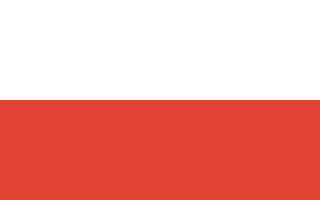
The Second Polish Republic, commonly known as Interwar Poland, refers to the country of Poland in the period between the two World Wars (1918–1939). Officially known as the Republic of Poland, the Polish state was re-established in 1918, in the aftermath of World War I. The Second Republic ceased to exist in 1939, when Poland was invaded by Nazi Germany, the Soviet Union and the Slovak Republic, marking the beginning of the European theatre of World War II.

Kraków, written in English as Krakow and traditionally known as Cracow, is the second-largest and one of the oldest cities in Poland. Situated on the Vistula River in Lesser Poland Province, the city dates back to the 7th century. Kraków was the official capital of Poland until 1596 and has traditionally been one of the leading centres of Polish academic, economic, cultural and artistic life. Cited as one of Europe's most beautiful cities, its Old Town was declared the first UNESCO World Heritage Site in the world.

Poland, officially the Republic of Poland, is a country located in Central Europe. It is divided into 16 administrative provinces, covering an area of 312,696 square kilometres (120,733 sq mi), and has a largely temperate seasonal climate. With a population of nearly 38.5 million people, Poland is the fifth most populous member state of the European Union. Poland's capital and largest metropolis is Warsaw. Other major cities include Kraków, Łódź, Wrocław, Poznań, Gdańsk, and Szczecin.
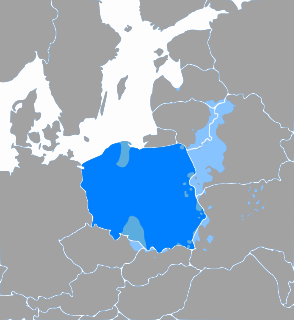
Polish is a West Slavic language of the Lechitic group. It is spoken primarily in Poland and serves as the native language of the Poles. In addition to being the official language of Poland, it is also used by Polish minorities in other countries. There are over 50 million Polish speakers around the world – it is the sixth-most-spoken language of the European Union.

Warsaw is the capital and largest city of Poland. The metropolis stands on the Vistula River in east-central Poland and its population is officially estimated at 1.8 million residents within a greater metropolitan area of 3.1 million residents, which makes Warsaw the 7th most-populous capital city in the European Union. The city limits cover 517.24 square kilometres (199.71 sq mi), while the metropolitan area covers 6,100.43 square kilometres (2,355.39 sq mi). Warsaw is an alpha- global city, a major international tourist destination, and a significant cultural, political and economic hub. Its historical Old Town was designated a UNESCO World Heritage Site.
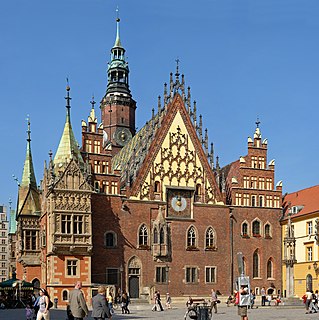
Wrocław is a city in southwestern Poland and the largest city in the historical region of Silesia. It lies on the banks of the River Oder in the Silesian Lowlands of Central Europe, roughly 350 kilometres (220 mi) from the Baltic Sea to the north and 40 kilometres (25 mi) from the Sudeten Mountains to the south. The official population of Wrocław in 2020 was 643,782, with a further 1.25 million residing in the metropolitan area.

Białystok is the largest city in northeastern Poland and the capital of the Podlaskie Voivodeship. Białystok is the tenth-largest city in Poland, second in terms of population density, and thirteenth in area.
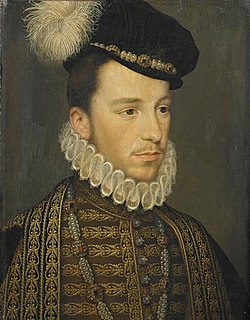
Henry III was King of France from 1574 until his death as well as King of Poland and Grand Duke of Lithuania from 1573 to 1575.

The Poles, also referred to as the Polish people, are a West Slavic ethnic group and a nation native to Poland in Central Europe, who share a common Polish ancestry, history, and culture and are speakers of the Polish language.

The invasion of Poland, also known as September campaign, 1939 defensive war and Poland campaign, was an attack on the Second Polish Republic by Nazi Germany and the Soviet Union which marked the beginning of World War II. The German invasion began on 1 September 1939, one week after the signing of the Molotov–Ribbentrop Pact between Germany and the Soviet Union, and one day after the Supreme Soviet of the Soviet Union had approved the pact. The Soviets invaded Poland on 17 September. The campaign ended on 6 October with Germany and the Soviet Union dividing and annexing the whole of Poland under the terms of the German–Soviet Frontier Treaty.

The Polish–Lithuanian Commonwealth, formally known as the Crown of the Kingdom of Poland and the Grand Duchy of Lithuania and, after 1791, the Commonwealth of Poland, was a country and bi-federation of Poland and Lithuania ruled by a common monarch in real union, who was both King of Poland and Grand Duke of Lithuania. It was one of the largest and most populous countries of 16th- to 17th-century Europe. At its largest territorial extent, in the early 17th century, the Commonwealth covered almost 1,000,000 square kilometres (400,000 sq mi) and as of 1618 sustained a multi-ethnic population of almost 12 million. Polish and Latin were the two co-official languages.

The Polish–Soviet War was fought by the Second Polish Republic and Soviet Russia over a region comparable to today's westernmost Ukraine and parts of modern Belarus. Following the Allied intervention in the Russian Civil War, Poland's Chief of State, Józef Piłsudski, felt the time was right to expand Polish borders as far east as feasible, to be followed by a Polish-led Intermarium federation of Central and Eastern European states, as a bulwark against the re-emergence of German and Russian expansionism. Vladimir Lenin saw Poland as the bridge the Red Army had to cross to assist other Communist movements and bring about more European revolutions. By 1919, Polish forces had taken control of much of Western Ukraine, emerging victorious from the Polish–Ukrainian War. The West Ukrainian People's Republic, led by Yevhen Petrushevych, had tried to create a Ukrainian state on territories to which both Poles and Ukrainians laid claim. In the Russian part of Ukraine Symon Petliura tried to defend and strengthen the Ukrainian People's Republic but as the Bolsheviks began to win the Russian Civil War, they started to advance westward towards the disputed Ukrainian territories, causing Petliura's forces to retreat to Podolia. By the end of 1919, a clear front had formed as Petliura decided to ally with Piłsudski. Border skirmishes escalated following Piłsudski's Kiev Offensive in April 1920.

The Polish People's Republic was a country in Central Europe that existed from 1947 to 1989 and the predecessor of the modern Republic of Poland. With a population of approximately 37.9 million near the end of its existence, it was the second most-populous communist and Eastern Bloc country in Europe. Having a unitary Marxist–Leninist government imposed following World War II, it was also one of the main signatories of the Warsaw Pact alliance. The largest city and official capital since 1947 was Warsaw, followed by the industrial city of Łódź and cultural city of Kraków. The country was bordered by the Baltic Sea to the north, the Soviet Union to the east, Czechoslovakia to the south, and East Germany to the west.

Polish Americans are Americans who have total or partial Polish ancestry. There are an estimated 9.15 million self-identified Polish Americans, representing about 2.83% of the U.S. population. Polish Americans are the second-largest Central European immigrant group after Germans, and the eighth largest immigrant group overall in the United States.
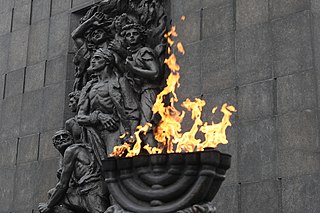
The history of Jews in Poland dates back at least 1,000 years. For centuries, Poland was home to the largest and most significant Jewish community in the world. Poland was a principal center of Jewish culture, because of the long period of statutory religious tolerance and social autonomy which ended after the Partitions of Poland in the 18th century. During World War II there was a nearly complete genocidal destruction of the Polish Jewish community by Nazi Germany and its collaborators, during the German occupation of Poland between 1939 and 1945, called the Holocaust. Since the fall of communism in Poland, there has been a renewed interest in Jewish culture, featuring an annual Jewish Culture Festival, new study programs at Polish secondary schools and universities, and the opening of Warsaw's Museum of the History of Polish Jews.

Nail polish is a lacquer that can be applied to the human fingernail or toenails to decorate and protect the nail plates. The formula has been revised repeatedly to enhance its decorative effects and to suppress cracking or peeling. Nail polish consists of a mix of an organic polymer and several other components that give it its unique color and texture. Nail polishes come in all shades of color and play a significant part in manicures or pedicures.
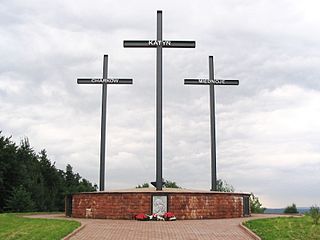
The Katyn massacre was a series of mass executions of nearly 22,000 Polish military officers and intelligentsia carried out by the Soviet Union, specifically the NKVD in April and May 1940. Though the killings also occurred in the Kalinin and Kharkiv prisons and elsewhere, the massacre is named after the Katyn Forest, where some of the mass graves were first discovered.

The COVID-19 pandemic in Poland is part of the worldwide pandemic of coronavirus disease 2019 caused by severe acute respiratory syndrome coronavirus 2. In February and March 2020, health authorities in Poland carried out laboratory testing of suspected cases of infection by SARS-CoV-2, one of the seven known human coronaviruses, as well as home quarantining and monitoring. The first case of a laboratory confirmed SARS-CoV-2 infection in Poland was that of a man hospitalised in Zielona Góra, with confirmation announced officially on 4 March 2020. The local transmission phase of SARS-CoV-2 in Poland was declared to the World Health Organization on 10 March. The first death from coronavirus disease 2019 (COVID-19) in Poland was that of a 56-year-old woman on 12 March. Polish authorities did not participate in the 28 February 2020 European Union tender procedure for purchasing COVID-19 pandemic related medical equipment, in which 20 other member states participated. Poland applied on 6 March for the 17 March tender for the purchase of gloves, goggles, face shields, surgical masks, and protective clothing. The European Commission stated that all requests in the tender were satisfied by offers.
References
- Witold Jakóbczyk, Przetrwać na Wartą 1815-1914, Dzieje narodu i państwa polskiego, vol. III-55, Krajowa Agencja Wydawnicza, Warszawa 1989
| | This biographical article about a Polish politician is a stub. You can help Wikipedia by expanding it. |